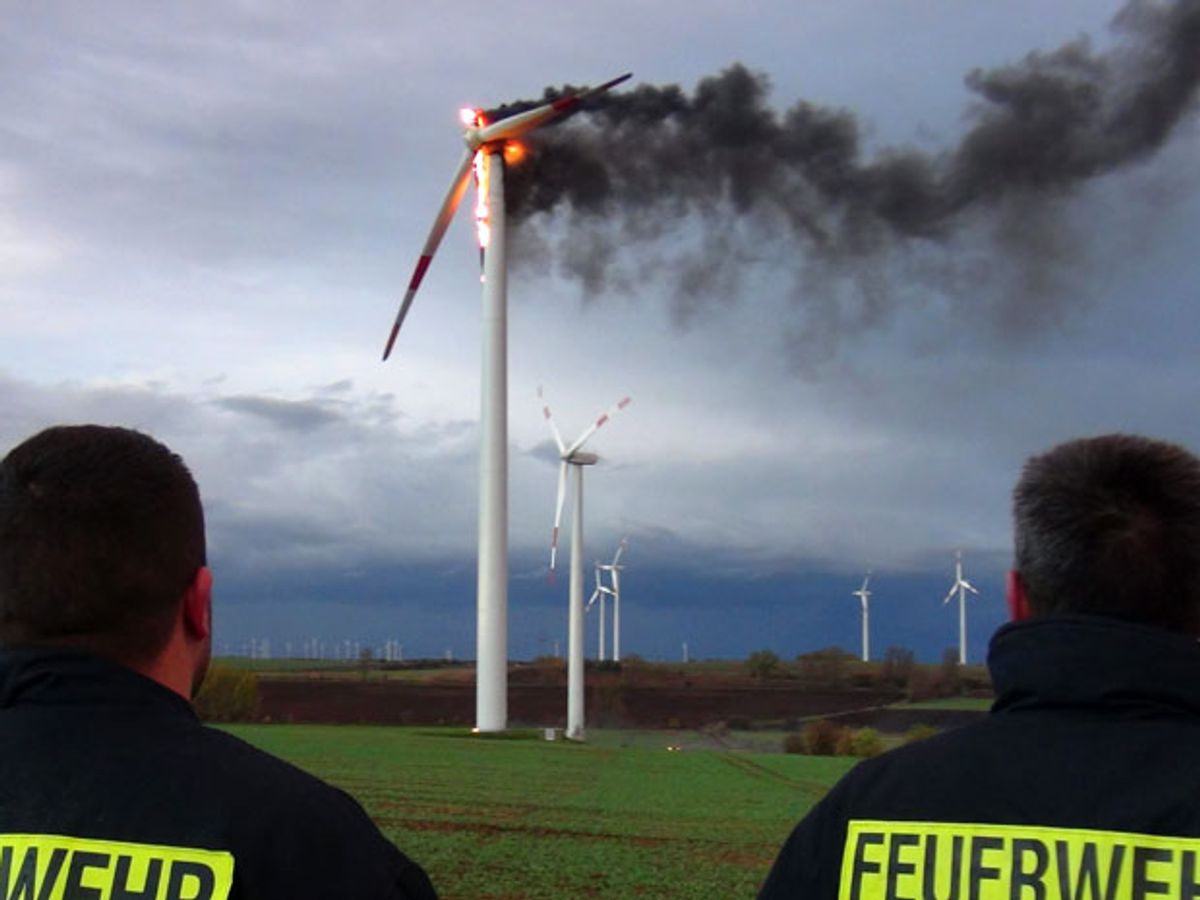Fires in wind turbines are happening ten times more often than they are reported, according to new research from Imperial College London, the University of Edinburgh and SP Technical Research Institute of Sweden.
The incidence of fire is still far less than in fossil fuel-based energy industries, such as oil and gas, which suffer thousands of fire accidents per year. The wind industry reports about 11 fires per year, but the researchers found there are more likely about 117 wind turbine fires annually across more than 200,000 turbines. For the wind industry, the fires are the second leading cause of accidents after blade failure.
Inside of the turbine’s nacelle, hydraulic oil and plastics share the same tight space as machinery and electrical wires. When there is overheating or faulty wiring it can catch fire. The nacelles are perched behind the turbines so high winds often fuel the flames.
Because the turbines are so tall and are often in remote areas, they are usually destroyed before the fire can be suppressed. In 90 percent of the cases, the fire leads to substantial downtime or a total loss of the wind turbine.
“Worryingly our report shows that fire may be a bigger problem than what is currently reported,” Guillermo Rein, from the department of mechanical engineering at Imperial College London, said in a statement. “Our research outlines a number of strategies that can be adopted by the industry to make these turbines safer and more fire resistant in the future."
The researchers looked at data from the past 30 years and found that fire accounted for 10 to 30 percent of the reported turbine accidents, with reports increasing. The leading cause of the fires was lightening strikes. That was followed by electrical malfunction, mechanical failure, and errors with maintenance.
One industry group, RenewableUK, welcomed the report overall but questioned the data sources used by the researchers. “Wind turbines are designed to international standards to meet mandatory health and safety standards including fire safety risks. State of the art monitoring systems ensure that the vast majority of turbine fires can be dealt with quickly and effectively,” Chris Streatfeild, director of health and safety for RenewableUK, said in a statement. “This is supported by an HSE-commissioned report in 2013, which concluded that the safety risks associated with wind turbines are well below all other comparable societal risks.”
Some of the strategies the researchers suggest to prevent ignition include passive fire protections, such as lightning protection systems and switching to non-combustible oils and insulating materials. Smoke alarms and fire suppression systems could also help minimize the extant of fire damage.
The researchers also plan to evaluate the frequency and impact of fire on solar panels in the future.



